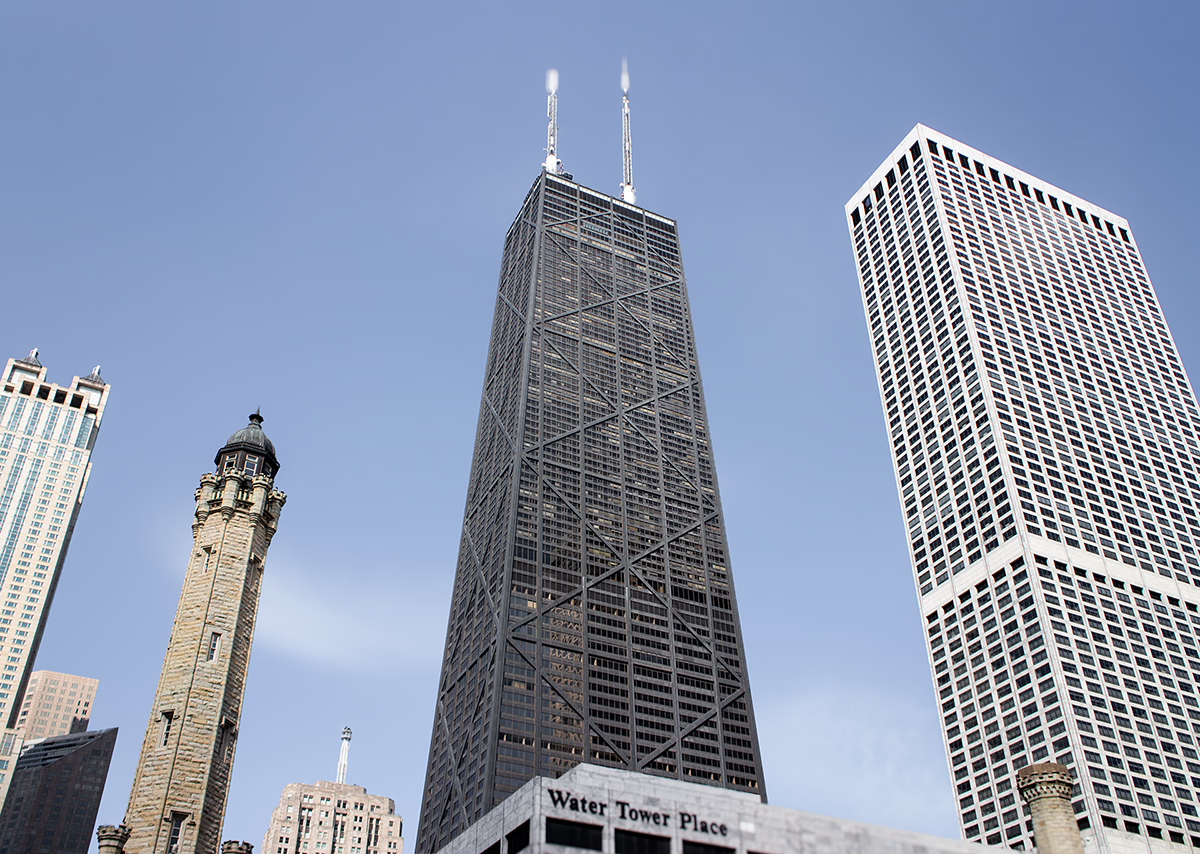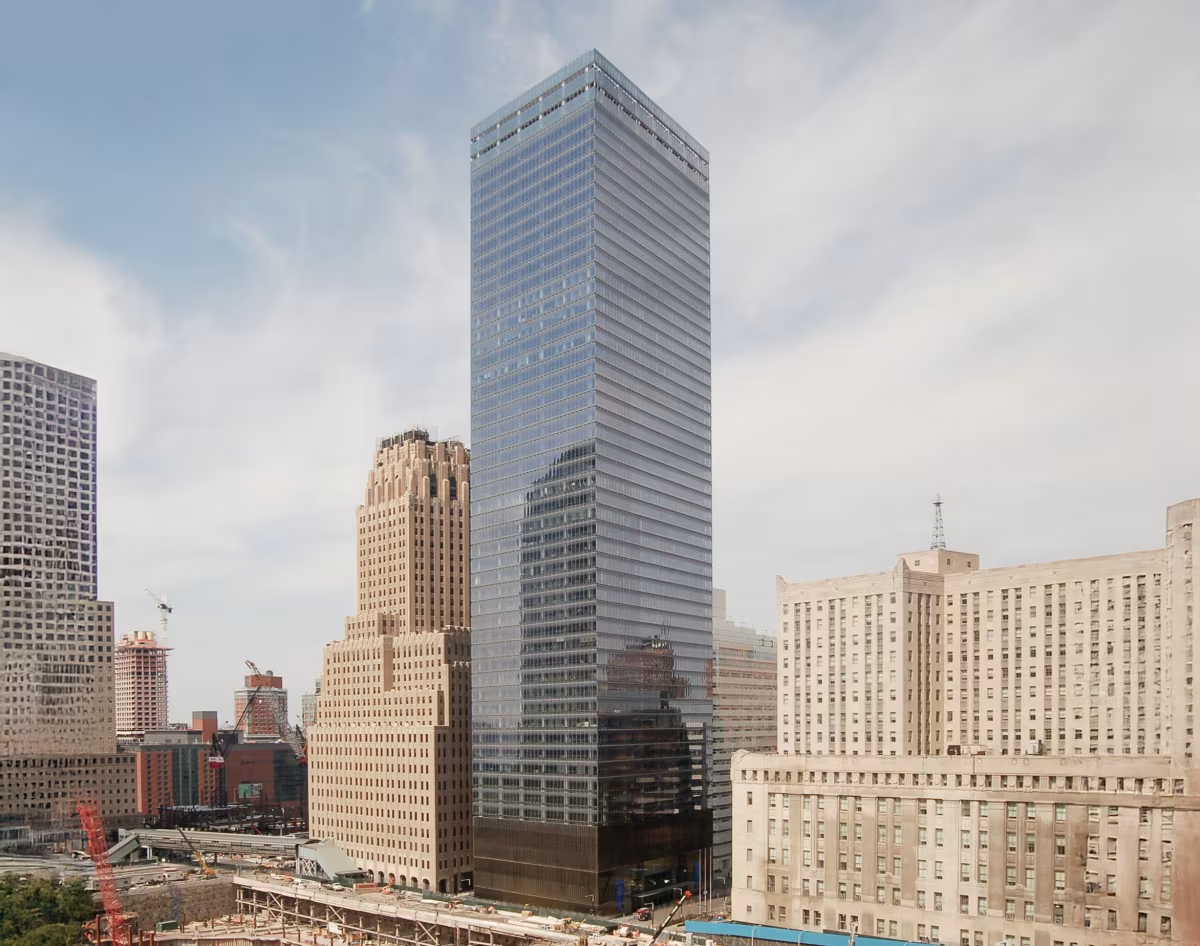John Hancock Center vs 7 World Trade Center


Comparing the John Hancock Center and the 7 World Trade Center is compelling because they were both designed by Skidmore, Owings & Merrill, yet they stand in different cities (Chicago, IL and New York, NY), and were completed over two decades apart.
What this will allow us to see, is how the same firm's approach adapted to different places in different periods of time.
Height & Size
The John Hancock Center is clearly the larger tower of the two, both in terms of height and number of floors. It rises to 1129ft (344m) with 100 floors above ground, while the 7 World Trade Center reaches 741ft (226m) with 51 floors above ground.
John Hancock Center also offers more total built-up area, a total fo 2,799,970 sqf (260,126m2), which is about 1,118,854 sqf (103,945m2) more than what the 7 World Trade Center offers.
By contrast, the John Hancock Center sits on a site with a lower floor area ratio.
Of course, each project may have faced different briefs or regulatory constraints, which we don't really know about and could also explain the outcome.
Architectural Style
The John Hancock Center was designed in the International Style style, while the 7 World Trade Center reflects the principles of Contemporary.
At the time of their completion, both styles were well established. This makes the comparison especially interesting, because both buildings represent a dominant aesthetic at a particular point in time.Built 37 years apart (1969 vs 2006), these two buildings are a perfect example of how different architectural styles have shaped the architectural landscape of our cities over time.
Uses
The John Hancock Center is primarily , while the 7 World Trade Center is primarily commercial.
The John Hancock Center offers 703 residential units.
The John Hancock Center also provides 710 parking spaces.
Structure & Facade
The two buildings opted for different structural and facade solutions.
The John Hancock Center uses a Trussed Tube In Tube system, which combines a central core with a perimeter tube reinforced by diagonal bracing, while the 7 World Trade Center uses a Frame system, that relies on a regular grid of columns and beams to sustain its weight.
And when it came to the facade, the Window Wall went with a Window Wall facade, which uses panels fitted between floor slabs, leaving slab edges visible, while the 7 World Trade Center opted for a Curtain Wall facade, that uses a lightweight glass curtain wall hung from the structure.
| John Hancock Center | 7 World Trade Center | |
|---|---|---|
| Skidmore, Owings & Merrill | Architect | Skidmore, Owings & Merrill |
| 1965 | Construction Started | 2002 |
| 1969 | Year Completed | 2006 |
| International Style | Architectural Style | Contemporary |
| 100 | Floors Above Ground | 51 |
| 1 | Floors Below Ground | 1 |
| 321 | Last Floor Height | 207 |
| 344 m | Height (m) | 226 m |
| 260126 | Built-up Area (m²) | 156181 |
| 50 | Number of Elevators | 29 |
| Trussed Tube In Tube | Structure Type | Frame |
| Steel | Vertical Structure Material | Steel |
| Concrete | Horizontal Structure Material | Poured Concrete Over Metal Decking |
| Yes | Facade Structural? | No |
| Steel, Glass | Main Facade Material | Glass |
| Tishman Construction Co | Main Contractor | Tishman Construction |
| John Hancock Mutual Life Insurance Company | Developer | Silverstein Properties |
| Otis | Elevator Company | OTIS Elevators |
| Fazlur Rahman Khan, And Srinivasa Iyengar | Structural Engineer | WSP Cantor Seinuk |
| IL | State | NY |
| Chicago | City | New York |
| 875 North Michigan Avenue | Address | 250 Greenwich Street |